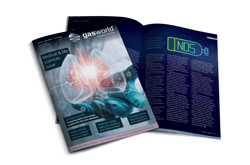The US federal government’s investment in semiconductor production and innovation is gathering pace, as the bodies established by the CHIPS & Science Act of 2022 begin to ramp up.
The message was reinforced in recent days by two institutional leaders in the space, who spoke on the record about progress and about plans from here.
Jay Lewis is Director of the CHIPS for America NSTC Program and Deirdre Hanford is the very recently appointed CEO of Natcast, which is the non-profit organization charged with operating the NSTC once established. Natcast is short for the National Center for the Advancement of Semiconductor Technology (Natcast), while the NSTC is the National Semiconductor Technology Center (NSTC), which will drive design and prototyping projects and community-building in the years ahead.
The pair noted that CHIPS for America, created by the CHIPS Act, has two main arms to it: $39bn earmarked for US production investments and $11bn for R&D.
... to continue reading you must be subscribed







